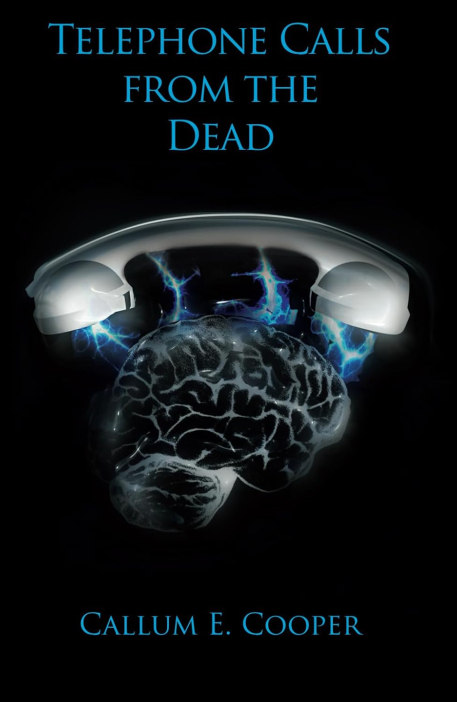
Reviewed by Tom Ruffles
Victorian Spiritualists saw a parallel between long-distance communication of a terrestrial kind and that with a realm even farther away, as witness the many references to the “spiritual telegraph” in the literature of the period. Similarly, as Joel Edmondson puts it in The Uncanny Ear: Film and Telepathy, “The telephone’s disembodiment of the human sense organs is here an analogy for the uncanny forms of transmission studied by nineteenth-century psychical research.”
As that implies, despite most of us using it every day, the telephone is inherently mysterious. It rings, you pick it up ... and take on trust the person at the other end. Most of the time our assumptions are correct, but there is an element of uncertainty, and telephony’s ambiguities, the paradox that the person with whom we are communicating is simultaneously present and not-present, can play on fears about lack of knowledge, and therefore control, as exploited by films like Phone and One Missed Call. If the person we are speaking to is disembodied anyway, how can we be sure they are alive? On the evidence presented here, it would seem that quite often they aren’t.
Scott Rogo and Raymond Bayless published examples of calls involving the deceased in their 1979 book, self-explanatorily entitled Phone Calls from the Dead, and now Cal Cooper has extended their work with new examples and further analysis. He gives some biographical details of Rogo and Bayless, then traces the history of research into anomalous communication utilising the telephone. In some cases calls were spontaneously received, in others, researchers built equipment – psychic telephones – which they hoped would facilitate contact with the beyond.
Cooper next analyses anomalous calls, dividing them into five types, only three of which involve calls from the dead: ‘simple’; ‘prolonged’; ‘answer’ (a living person makes the call to someone, not realising they are dead, and the phone is answered); ‘mixed’ (combining aspects of ‘simple’ and ‘prolonged’); and ‘intention’ (a living person intends to make a call, doesn’t, and then finds that the intended recipient claims to have received it after all. So who rang?). Bringing the phenomenon up to date are voicemail messages from the dead which, though rare, have been documented, and text messages, easy to fake these days as they can be sent anonymously from websites with no metadata attached.
As well as analysing the accounts, Cooper has to defend Rogo and Bayless from charges that their work was not scientific because it was based on anecdotes. These could be seen as possessing strength through numbers, but the sceptical response is that numerous poor cases are no more convincing than one. Yet Rogo and Bayless brought to light a phenomenon that many people considered genuine, whatever the interpretation, and Cooper notes that they received letters after publication thanking them for highlighting something the writers thought that they alone had experienced. Something is going on, and it requires exploration.
In that spirit, after providing examples of the different types, Cooper discusses various possible explanations for these calls, including non-paranormal ones such as technical faults, misinterpretation, hoaxes, dreams and hallucinations. These are all possibilities; however, it is difficult to attribute a lengthy telephone call with someone who has died to hallucination, especially when there are witnesses.
Even if calls are paranormal in nature, Cooper speculates, they do not necessarily involve contact with the dead. They could be the result of psychokinesis by the bereaved, making the instrument ring while in a highly-charged emotional state, and hallucinating the subsequent conversation. This PK suggestion leads into a discussion of individuals affecting electrical systems (though the Rosenheim poltergeist case, in which many calls were made to the speaking clock, is not mentioned). Information not known to the living party could be acquired through clairvoyance or by telepathy with the living – the Super-ESP problem.
Finally, in line with Rogo and Bayless’s approach, Cooper seeks the opinions of three experts, the late John Randall, James Beichler, and John Palmer, the last a commentator for Rogo and Bayless’s findings as well. While unable to supply any answers, they all agree that the subject is an important one and worth investigation. Cooper urges researchers to keep an open mind when judging cases.
Anomalous phone calls definitely do not fit neatly into one category, and more work needs to be done in teasing out the differences, finding additional examples, and exploring causes. There will be a variety of explanations, but some of these could shed light on the human condition, pre- and perhaps post-mortem. With that end in mind, Cooper has performed a valuable service in reinvigorating a neglected field.

